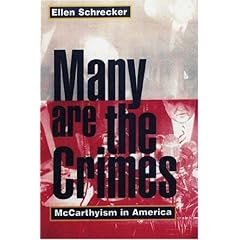The
Austro-Hungarian Empire, also known as
Austria-Hungary,
Dual Monarchy or
k.u.k. Monarchy or
Dual State, was a
dual-monarchic union state in
Central Europe from 1867 to 1918, dissolved at the end of
World War I.
The dual monarchy was the successor to the
Austrian Empire (1804–1867) on the same territory, originating in the
compromise between the ruling
Habsburg dynasty and the Hungarians.
As a multi-national
empire and
great power in an era of
national awakening, it found its political life dominated by disputes among the eleven principal national groups.
Its economic and social life was marked by a rapid economic growth through the age of
industrialization and social modernization through many liberal and democratic reforms.
The
Habsburg dynasty ruled as
Emperors of Austria over the western and northern half of the country and as
Kings of Hungary over the
Kingdom of Hungary which enjoyed some degree of self-government and representation in joint affairs (principally foreign relations and defence).
The federation bore the full name internationally of "The Kingdoms and Lands Represented in the Imperial Council and the
Lands of the Crown of St. Stephen".
The capital of the state was
Vienna. The Austro-Hungarian Empire was geographically the second largest country in Europe after the
Russian Empire, and the third most populous (after both Russia and the
German Empire). The territory it covered today has a population of about 73 million.
Names of the Empire in languages officially recognized by the Austro-Hungarian Empire:
German:
Österreich-Ungarn Hungarian:
Osztrák–Magyar Monarchia Bosnian:
Austro-Ugarska Czech:
Rakousko-Uhersko Croatian:
Austro-Ugarska Italian:
Austria-Ungheria Polish:
Austro-Węgry Romanian:
Austro-Ungaria Slovak:
Rakúsko-Uhorsko Slovenian:
Avstro-Ogrska Serbian:
Aустро-Угарска, Austro-Ugarska Serbo-Croat: Austro-Ugarska
Ukrainian:
Австро-Угорщина, Avstro-Uhorščyna Rusyn:
Австро-Магярщина, Avstro-Magyarščina Creation of the Austro-Hungarian Empire Article 19 of the Austro-Hungarian constitution stated:
All races of the empire have equal rights, and every race has an inviolable right to the preservation and use of its own nationality and language. The equality of all customary languages ("landesübliche Sprache") in school, office and public life, is recognized by the state. In those territories in which several races dwell, the public and educational institutions are to be so arranged that, without applying compulsion to learn a second country language ("Landessprache"), each of the races receives the necessary means of education in its own language. The implementation of this principle led to several disputes since everything depended on the decision as to which language could be regarded as
landesüblich or customary. The Germans, the traditional bureaucratic, capitalist and cultural elite, demanded the recognition of their language as a customary language in every part of the empire. While
Italian was regarded as an old "culture language" (
Kultursprache) by German-speaking intellectuals and had always been granted equal rights as an official language of the Empire, they had particular difficulties in accepting the
Slavic languages as equal to German. On one occasion Count A. Auersperg (Anastasius Grün) entered the diet of
Carniola carrying what he claimed to be the whole corpus of
Slovenian literature under his arm to provide evidence that the
Slovenian language could in his view not be substituted for German as a medium of higher education.
Nevertheless the following years saw an emancipation of several languages at least in the Cisleithanian part of the Empire. In a series of laws from 1867 and onwards, the
Croatian language was raised to equality with the hitherto officially dominating Italian language in
Dalmatia. From 1882 there was a Slovenian majority in the diet of Carniola and in the capital
Laibach (Ljubljana), thereby replacing German as the dominant official language. Polish was introduced instead of German in 1869 in
Galicia as the normal language of government. The Poles themselves systematically disregarded the large Ukrainian minority in the country, and Ukrainian was not granted the status of an official language.
The language disputes were most fiercely fought in
Bohemia and
Moravia where the Czechs wanted to establish their language as the dominating language even in the purely German-speaking bordering areas of the country (later called the "
Sudetenland"). German-speakers lost their majority in the Bohemian diet in 1880 and their dominating position in the cities of
Prague and
Pilsen (while retaining a slight numerical majority in the city of
Brno (Brünn)) and found themselves in an unfamiliar minority position. The old
Charles University in Prague hitherto dominated by the German-speakers was divided into a German and a Czech part in 1882.
At the same time, Magyar dominance faced challenges from the local majorities of
Romanians in
Transylvania and in the eastern
Banat, of
Slovaks in today's
Slovakia, of
Croats and
Serbs in the crownlands of
Croatia and of
Dalmatia (today's
Croatia), in
Bosnia and Herzegovina and in the provinces known as the
Vojvodina (today's northern
Serbia). The Romanians and the Serbs also looked to union with their fellow-nationalists in the newly-founded states of
Romania (1859–78) and
Serbia.
Though Hungary's leaders showed on the whole less willingness than their Austrian counterparts to share power with their subject minorities, they granted (it is argued) a large measure of autonomy to the kingdom of
Croatia in 1868, parallelling to some extent their own accommodation within the Empire the previous year.
Language was one of the most contentious questions in Austro-Hungarian politics. All governments faced difficult and divisive hurdles in sorting out the languages of government and of instruction. Minorities wanted to ensure the widest possibility for education in their own language as well as in the "dominant" languages of Hungarian and German. On one notable occasion, that of the so-called "Ordinance of
April 5,
1897", the Austrian Prime Minister
Kasimir Felix Graf Badeni gave Czech equal standing with German in the internal government of
Bohemia and also in the purely German-speaking parts of Bohemia, leading to a crisis because of nationalist German agitation throughout the Empire. In the end Badeni was dismissed.
From January 1907 all the public and private schools in the Slovak part of Hungary (with approximately 2m inhabitants) were forced to teach solely in the Hungarian language, burning Slovak books and newspapers. This led to wide criticism by
Bjørnstjerne Bjørnson, among others.
It was not rare for the two kingdoms to divide spheres of influence. According to
Misha Glenny (
The Balkans, 1804–1999), the Austrians responded to Hungarian badgering of Czechs by supporting the Croatian national movement in Zagreb. (Croatia, in spite of nominal autonomy, was in fact an economic and administrative arm of Hungary, which the Croatians resented).
Emperor Franz Joseph himself was very well aware that he reigned in a multiethnic country and spoke fluent German, Hungarian, Czech, and, to some degree, also Polish and Italian.
The situation of Jews in the kingdom, who numbered about 2 million in 1914, was ambiguous. Anti-Semitic parties and movements existed, but Vienna did not initiate pogroms or implement official anti-Semitic policies. This was mainly out of fear that such ethnic violence could ignite other ethnic minorities and result in violence that could spin out of control. The majority of Jews lived in small towns of
Galicia and rural areas in Hungary, Bohemia, although there were large communities in Vienna, Budapest, Prague and other large cities.
Ethnic relations  Common languages in Cisleithania
Common languages in Cisleithania Source: Census Dec. 31st 1910, published in:
Geographischer Atlas zur Vaterlandskunde an der österreichischen Mittelschulen. K. u. k. Hof-Kartographische Anstalt G. Freytag & Berndt, Vienna, 1911.
Economy Main article: Austro-Hungarian Army Military The Imperial (Austrian) and Royal (Hungarian) governments differed also to some extent in their attitude toward the Empire's common foreign policy. Politicians in Budapest particularly feared annexations of territory which would add to the kingdom's non-Hungarian populations. But the Empire's alliance with
Germany against
Russia from October 1879 (see
Dual Alliance, 1879) commanded general acceptance, since Russia seemed the principal external military threat to both parts.
Austro-Hungarian forces occupied the territory of
Bosnia and Herzegovina from August 1878 under the
Treaty of Berlin. The Empire annexed this territory in October 1908 as a common holding under the control of the finance ministry rather than attaching it to either territorial government. The annexation set up an anomalous situation which led some in Vienna to contemplate combining Bosnia and Herzegovina with Croatia to form a third component of the Empire, uniting its southern Slav regions under the domination of Croatians, who might have proved more sympathetic to
Vienna than to Budapest.
Foreign policy The deaths of Franz Joseph's brother,
Maximilian (1867), and only son,
Rudolf, made the Emperor's nephew,
Franz Ferdinand, heir presumptive to the crown. On
June 28,
1914, the heir visited the Bosnian capital,
Sarajevo, where Bosnian Serb militants of the nationalist group
Mlada Bosna, supplied by the violent Serbian militant group
Black Hand, ambushed Franz Ferdinand's convoy and assassinated him.
See: Assassination in Sarajevo After the
Congress of Berlin the Empire's military spending did not even double, while that of Germany rose fivefold, and British, Russian and French spending rose threefold. The Empire had previously lost ethnically Italian areas to
Piedmont due to nationalist movements sweeping through Italy, and many Austro-Hungarians felt the threat of losing the southern territories inhabited by Slavs to
Serbia as imminent. Serbia had recently gained a significant amount of territory in the
Second Balkan War of 1913, causing much distress in government circles in Vienna and Budapest. Some members of the government, such as
Conrad von Hötzendorf had wanted to confront the resurgent Serbian nation for some years. The leadership of Austria-Hungary, especially Count Leopold von Berchtold, backed by its ally Germany, decided to confront Serbia militarily before it could incite a revolt: using the assassination as an excuse, they presented a list of ten demands called the
July Ultimatum [1] expecting Serbia would never accept. When Serbia accepted nine of the ten demands but only partially accepted the remaining one, Austria-Hungary declared war.
These events brought the Empire into conflict with Serbia and over the course of July and August 1914, caused the start of
World War I, as Russia mobilized in support of Serbia, setting off a series of counter-mobilizations.
Italy initially remained neutral, although it had an alliance with Austria–Hungary. In 1915 it switched to the side of the
Entente powers, hoping to gain territory from Austria–Hungary.
General
Franz Conrad von Hötzendorf was the Chief of the Austro-Hungarian
General Staff during the war. Under his command, Austro-Hungarian troops were involved in much of the fighting in the Great War.
At the start of the war, the army was divided in two, the smaller part attacked Serbia while the larger part fought against the massive Russian army. The 1914 invasion of Serbia was a disaster. By the end of the year the Austrian army had taken no territory and had lost 227,000 men (out of a total force of 450,000 men);
see Serbian Campaign (World War I).
On the Eastern front, things started out equally badly. The
Austrian army was defeated at the
Battle of Lemberg and the mighty fort city of
Przemysl was besieged (it would fall in March 1915).
In May 1915, Italy joined the Allies and attacked Austria-Hungary. The bloody but indecisive fighting on the
Italian front would last for the next three and a half years. It was only this front that the Austrians proved effective in war, managing to hold back the numerically superior Italian armies in the
Alps.
In the summer, the Austrian army, working under a unified command with the Germans, participated in the successful
Gorlice–Tarnow Offensive.
Later in 1915, the Austrian army, in conjunction with the German and Bulgarian armies, conquered Serbia.
In 1916, the Russians focused their attacks on the Austrian-Hungarian army in the
Brusilov Offensive, recognising the numerical inferiority of the Austro-Hungarian Army. The Austrian armies took massive losses (losing about 1 million men) and never recovered. The huge losses of men and material inflicted on the Russians during the offensive contributed greatly to the causes of their communist revolution of 1917. The Austro-Hungarian war effort became more and more subordinate to the direction of German planners, as it did with the standard soldiers. The Austrians saw the German army positively, but by 1916 the general belief in Germany was that they were "shackled to a corpse." Supply shortages, low morale, and the high casualty rate seriously affected the operational abilities of the army, as well as the fact the army was of multiple ethnicity, all with different race, language and customs.
The last two successes for the Austrians: the
Conquest of Romania and the
Caporetto Offensive, were German-assisted operations. Due to the fact that the empire had become more and more dependent on German assistance, the majority of its people, not of Hungarian or Austrian ethnicity, became aware of the empire's destabilisation.
In June 1918, Conrad attempted a double edged offensive with the bulk of remaining Austro-Hungarian forces against Italy. It failed, and in October 1918 the Italian army counter-attacked, gaining victory in the
battle of Vittorio Veneto, destroying the last of the Austrian Army and ending the Habsburg Empire.
The Great War As it became apparent that the Allied Powers of the
British Empire,
France,
Italy and the
United States would win World War I, nationalist movements which had previously been calling for a greater degree of autonomy for various areas, started pressing for full independence. With defeat in the war imminent, Czechoslovakia declared independence on
28 October 1918 and on
29 October the southern Slav areas declared the
State of Slovenes, Croats and Serbs. The Hungarian government terminated its union with Austria on
31 October 1918, officially dissolving the Austro-Hungarian state.
In
Austria and
Hungary, separate republics were declared at the end of the war in November. The
treaty of Saint Germain (between the victors of World War I and Austria) and the
treaty of Trianon (between the victors and Hungary) regulated the dissolution of Austria–Hungary. The last Habsburg emperor-king,
Karl I (styled Károly IV in Hungary), renounced participation in affairs of state (but did not
abdicate) and fled to
Switzerland.
A monarchist revival in Hungary after a short-lived
communist regime and the Romanian intervention of 1919 resulted in the restoration of the Hungarian monarchy (March 1920), with the royal powers entrusted to a
regent, the naval hero Admiral
Miklós Horthy. Ill-prepared attempts by
Karl to regain the throne in Budapest (March, October 1921) collapsed when the initially wavering Horthy, who had received threats of intervention from the
Allied powers and neighboring countries, refused his cooperation. Subsequently the British took custody of Karl and removed him and his family to the
Portuguese island of
Madeira, where he died the following year.
Dissolution of the Empire The following successor states were formed (entirely or in part) from the former Habsburg lands:
Some Austro-Hungarian lands were also ceded to
Romania,
Ukraine and
Italy.
Liechtenstein, which had formerly looked to Vienna for protection, formed a customs and defence union with
Switzerland, and adopted the Swiss currency instead of the Austrian. In April 1919
Vorarlberg, the westernmost province of Austria, voted by a large majority to join Switzerland; however both the Swiss and the Allies disregarded this result.
Austria Hungary Czechoslovakia State of Slovenes, Croats and Serbs (joined with the Kingdom of
Serbia on
1 December 1918 to form the
Kingdom of Serbs, Croats and Slovenes, later
Yugoslavia)
Poland New states The following countries were located within the boundaries of Austria-Hungary when the empire was dissolved:
Empire of Austria (Cisleithania)
Kingdom of Hungary (Transleithania)
Austrian-Hungarian Condominium Other parts of Europe had been part of the
Habsburg-monarchy once but left it even before its dissolution in 1918. Prominent examples are the regions of
Lombardia and
Veneto in
Italy, most of
Belgium and parts of northern
Switzerland and south-western
Germany.
Austria (with the exception of
Burgenland)
Czech Republic (with the exception of
Hlučínsko Area)
Slovenia (with the exception of
Prekmurje)
Italy (autonomous regions of
Trentino-Alto Adige/Südtirol and small portions of
Friuli-Venezia Giulia)
Croatia (Dalmatia, Istria)
Poland (voivodeships of
Lesser Poland,
Subcarpathia,
Silesia with the exception of the area of
Katowice)
Ukraine (oblasts of
Lviv,
Ivano-Frankivsk, and
Ternopil, and most of the oblast of
Chernivtsi)
Romania (county of
Suceava)
Montenegro (bay of
Boka Kotorska, the coast and the immediate hinterland around cities of Budva, Petrovac and Sutomore)
Hungary Slovakia Austria (
Burgenland)
Slovenia (
Prekmurje)
Croatia (
Slavonia, Central Croatia, southern parts of the pre-1918 Baranya and Zala counties - today's Croatian part of Baranja and Međimurje county - )
Ukraine (oblast of
Zakarpattia)
Romania (region of
Transylvania)
Serbia (autonomous province of
Vojvodina, large parts of the
Belgrade region)
Bosnia and Herzegovina (the villages of Zavalje, Mali skočaj and Veliki skočaj incl. the immediate surrounding area western of the city of Bihać)
Bosnia and Herzegovina Montenegro (Sutorina - western part of the Municipality of Herceg-Novi between present borders with Croatia (SW) and Bosnia and Herzegovina (NW), Adriatic coast (E) and the township of Igalo (NE))
Flags and heraldry of Austria-Hungary Czech lands: 1867-1918 Aftermath of World War I Austrian nobility Habsburg Monarchy Former countries in Europe after 1815 List of extinct states Banat Republic Corporative federalism, a form of administration adopted by the Austro-Hungarian Empire.
Baron
Ladislaus Hengelmuller, Austro-Hungarian Ambassador to the United States from 1894–1913
 Loyalty-security reviews
Loyalty-security reviews Continuing controversy
Continuing controversy
 Nationality
Nationality Sports
Sports
 Congressional career
Congressional career
 History
History
 Eval
Eval

 Common languages in Cisleithania
Common languages in Cisleithania